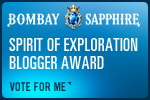I understand your attraction to the Pacific Seacraft sailboats, the Dana 24 and the Flicka 20. They are sweet-looking little boats, and in the proper circumstances, I am sure they would be enjoyable to sail. In fact, each is small enough to be trailerable, which opens up all kinds of sailing possibilities. Being small, they are also less expensive to purchase and maintain than larger sailboats.
Unfortunately, for me at least, that is where the advantages end. Smaller boats are naturally slower. This is partly a function of hull shape. Because a boat's beam needs to be wide enough to accommodate a comfortable cabin, smaller boats end up being shaped more like stout rowboats than sleek canoes, with a corresponding loss of performance. The smaller hull size lends itself well to the incorporation of a full keel, which helps with trailerability but reduces maneuverability and adds surface drag.
Smaller sailboats naturally accommodate smaller crews and offer less storage space, so they are not well suited to long-distance cruising, which might require rotating watch shifts and enough food and water to feed a hungry crew for an extended period. You mentioned that someone sailed a Dana 24 or a Flicka 20 from California to Tahiti, but I'll bet that it was just one person, that the boat was loaded to the gills with provisions, that the passage took several months, and that he was lucky to have favorable wind and wave conditions most of the way.
What I am leading to here is the issue of safety. I have been on small sailboats in bad conditions, and it is no fun. It can be downright scary. When the waves are huge and the wind is howling, there is so much motion in a small sailboat that it can be difficult to make any headway at all. And a boat that is not moving forward is like a raft, at the mercy of the elements. A larger sailboat, instead of riding up and over the waves, will plow through them. Its greater length and weight give it better stability and smoother motion, which keeps it making headway in all but the worst conditions.
My recommendation to you is that after you have taken the sailing lessons you have scheduled for July, you should evaluate what type of sailing you would like to pursue. If it's sailing inland lakes or coastal cruising, then a Dana 24 or Flicka 20 might be the perfect boat for you. But if you dream of crossing oceans, you should seriously consider a larger sailboat, one more in the 36- to 50-foot range.
Best of luck to you as you embark on one of life's most rewarding journeys!

 Raising Charlie: The Lessons of a Perfect Dog
Raising Charlie: The Lessons of a Perfect Dog




3 comments:
John, thanks so much for that great post based off of my question. The fellow I was talking about, sailed to the South Seas from San Diego - the name of the book is "Kowabunga's South Seas Adventure". I am re-reading it to get psyched up for my July sailing class. It did take him a long time, it took 42 days, and he also did go it alone - you are right about that, as well. It was supposed to be him and his wife, but because of a family emergency, it was just the author single-handing his way there.
So my follow-up, if you can indulge me, is this: You mentioned to know what I wanted, and was it sailing across oceans or coastal sailing. What my ultimate dream is, which is a much smaller version of your dream, is to sail from Florida to the Bahamas and then sail around the Out Islands for a month. So you see, I am just talking about a few days of blue water and then mostly coastal. What do you think about that? Would you think doing that in a Flicka or a Dana would be do-able and reasonably safe (knowing there is always risk - etc.) Especially if getting there quickly was not much of a priority. Thanks again John - your blog is awesome!
- Steve
staringdownmedusa.com
Steve, I think sailing a Dana or a Flicka from Florida to the Bahamas is entirely reasonable. I read on the Internet about a guy who motored across the Gulf Stream on a calm day in his MacGregor 26, which is a much less substantial sailboat, and he didn't have any trouble. That might be the safest, easiest way to do it. After you reach the Bahamas, you'll be able to stay in the lee of the islands and rarely be out of sight of land--a very doable dream. By the way, I checked your blog, too. Good stuff! Especially the page not found message. Passed that one around at work.
Hello all,
here is a link to a blog written by a couple that have sailed from Washington State (Port Townsend) and are near or in the Cook Islands on their way to New Zealand. They have run into several other Dana 24's on this adventure. Don't sell the Dana "short" :-). Fairwinds...
http://karenandjimsexcellentadventure.blogspot.ca/
Neal Fennell
S/V Dolly Dagger
Post a Comment